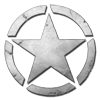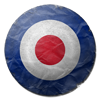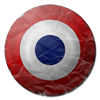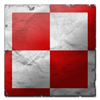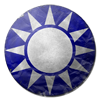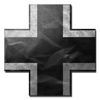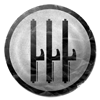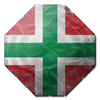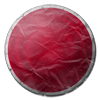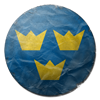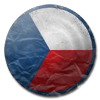:: Forum on Revora
:: Forum on PPM
:: D-day wiki
:: FAQ
:: Unit list
:: Downloads
:: Britain
:: France
:: Poland
:: China
:: Soviet Union
:: Germany
:: Italy
:: Hungary
:: Japan
:: Sweden
:: Czechoslovakia
:: Other
|
.:Welcome to the D-day website:. D-day is a modification for the highly acclaimed computer game Red Alert 2 and its expansion Yuri's Revenge. It changes Red Alert 2's original cartoony and arcade style gameplay into a more realistic World War II theme. There are over a thousand new units to build and fight with, spanning from the early beginnings of the conflict in the 1920's onto a hypothetical what-if continuation of the war into the 1960's and beyond. If you have any questions please use the forums or leave a message in the shout box on this page. 

|
.:Quick news:.
Tweets by MigEater |
The Japanese are back with a new sidebar and several new buildings, which when built give you access to new superweapons. Also in this screenshot is a new style of cameo, which replaces the monochromatic sepia coloured cameos previously used with full colour renders. Lastly this was taken on a new map that I will be posting more about in the coming weeks, along with several others.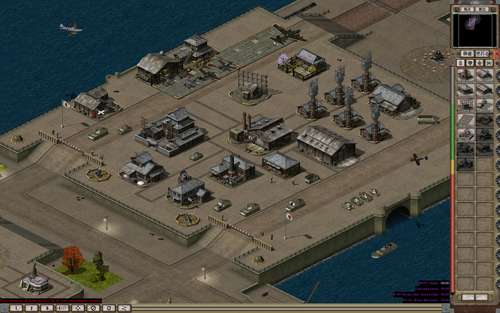
Click to enlarge
This is a new more historically correct version of the barracks, based on a structure built by the Japanese on Saipan.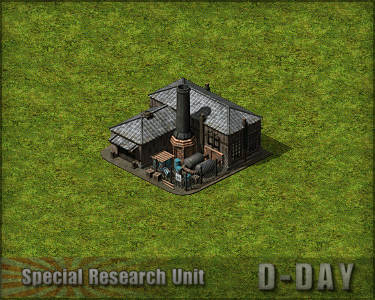
The Special Research Unit is a chemical weapons lab that gives you the ability to build chemical spreading tanks and use the Contaminate superweapon. Which releases a large gas cloud that will slowly damage any units or buildings within it's area.
Note: I was reluctant to add this building/support weapon due to the sensitive nature of Japan's use and research of chemical/biological weapons. Because of the sensitive nature tho, Japan's use of such weapons during the war isn't widely known. I thought this might be a good way to raise awareness and possibly inspire players to research about it themselves.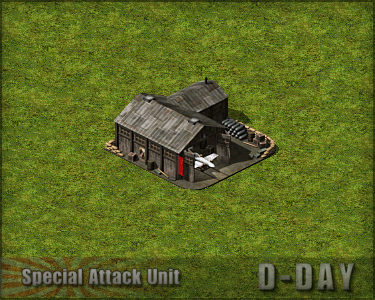
The Special Attack Unit gives you the ability to build kamikaze units, as well as accesses to the MXY7 Ohka superweapon, a specialised piloted rocket equipped with a large warhead.

The Joint Operations Centre Is used by the post-war Japanese Self Defence Force sub-faction to coordinate with their American allies and call in B-47 Stratojet airstrikes on enemy targets.
Note: The JSDF as it's name implies is a defensive force and as such doesn't have any large or long range offensive weaponry. They instead rely upon their American allies to support them if they enter into a war.
It's now been a month since I started clearing the backlog of D-day units and in that time I've managed to post roughly a quarter of them, so at this rate I should be done by February! Spending the next three months doing nothing but posting units is a daunting thought tho. So I'm going to to cutback and focus on the remaining Japanese units, I'll post some other sides units sporadically as my mood changes but most will have to wait until after the release of v3.8. Now with the bad news over with lets move on to some fun stuff ![]()
Trains have been a part of D-day since the beginning of the mod, train tracks being the first new terrain ever made for D-day. Over the years the graphics have been improved several times but they have always been used as simple map decorations. With the latest evolution of D-day's trains though you can now build and control your own armoured train units! 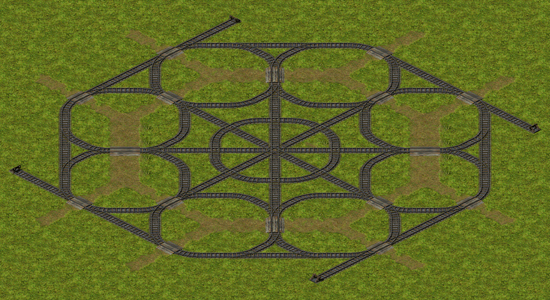
Click to enlarge
Click of the unit names to visit their D-day wiki page for more information & pictures.
Train Yard
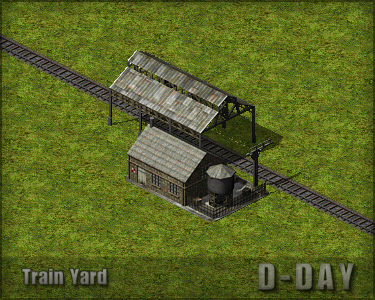
The Train yard is a Tech building that is only available on specific maps, once captured it gives the player the ability to build armoured trains.
Tatra T18
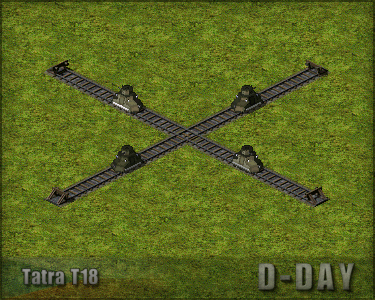
The Tatra T18 was a Czech armoured draisine built in 1925 for the Polish army. Based on the T14 cargo draisine, it was fitted with an armoured body and a turret equipped with two 7.92mm machine guns. The Polish were unhappy with the design owing to it's weak engine and slow acceleration, changing the engine would however require a complete redesign of the chassis. Nevertheless a further nine unarmoured chassis where ordered in April 1927 with the intention of building the armoured bodies in Poland, but it is unknown if this was accomplished. During the annexation of Czechoslovakia and Poland the Germans captured several T18s, they were then incorporated into the Wehrmacht and used until they were worn out.
Heavy Infantry Armored Car S.Sp
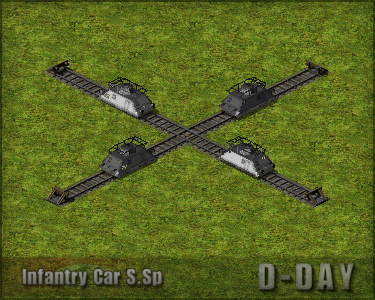
The Schwerer Schienenpanzer (Heavy Rail Tank) class of armoured train cars were built by Steyer in 1944 for the Deutsche Reichsbahnin. Although designed to operate in a train with up to 20 other S.Sp cars, they were also capable of operating independently. They were mainly deployed to the Balkans to patrol for partisans attempting to sabotage the rail network. This is the Infantry variant of the S.Sp design, equipped with a long range radio and heavy machine guns.
Heavy Artillery Armored Car S.Sp
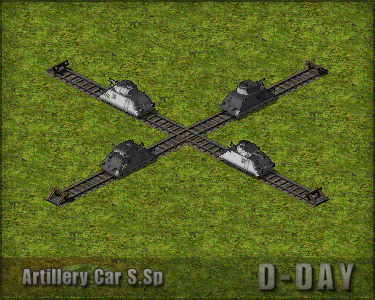
This artillery variant of the Schwerer Schienenpanzer (Heavy Rail Tank) was fitted with the turret from the Panzer III Ausf.N and equipped with a 75mm KwK 37 L/24. It was designed to provide high explosive fire support for a S.Sp train but it could also operate independently.
Heavy Anti-Aircraft Armored Car S.Sp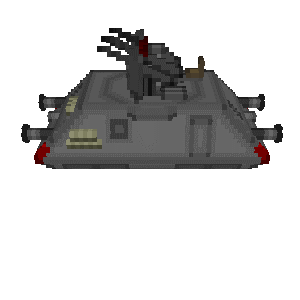
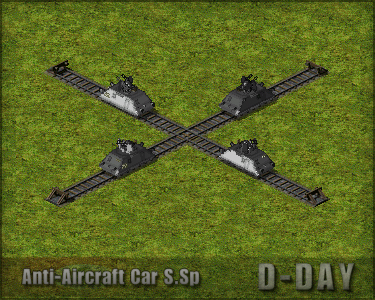
By 1945 the Allied air forces had gained air superiority over Europe, with the loss of air cover it became extremely difficult for Germany to move any troops and supplies without gaining the attention of the Allied air force who where attacking every truck and train they could find. In an attempt to combat this threat a project was started to fit the Schwerer Schienenpanzer with a 20mm Flakvierling 38 Anti-Aircraft gun. No photographs of this variant have been found and it is unknown if any were completed before the end of the war.
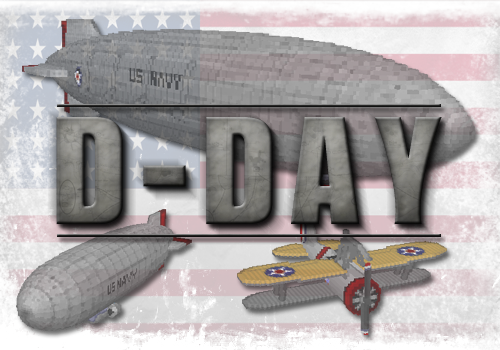
Today D-day takes off with some unique and often overlooked american Airships.
Click of the unit names to visit their D-day wiki page for more information & pictures.
Airship Hanger
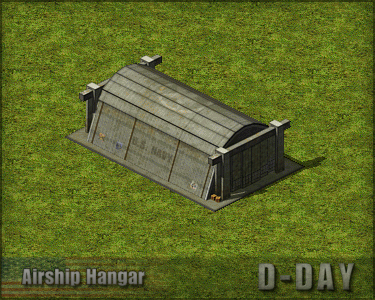
Constructing the Airship Hanger gives the player the ability to build special blimp units. The design is based on the hangers at Santa Ana Naval Air Station (now Marine Corps Air Station Tustin), which was built in 1942 to hold and service the US Navy's airships. After the war airship operations stopped but the base soon found new usage as a helicopter maintenance and training center for the Marine Corps. Today most of the base has been closed but one of the hangers is still being used by civilian airships.
K-Class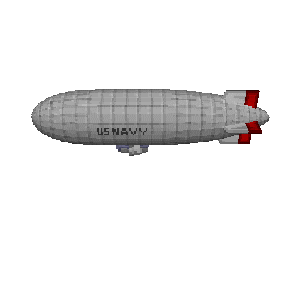

The K-class were the US Navy's primary patrol and anti-submarine airship during WW2. They were used to patrol the American coastline and escort convoys for signs of German or Japanese submarines. Their greatest success though was at Gibraltar where they helped to blockade the entrance to the Mediterranean during the night, when it was to dangerous for normal aircraft to operate. After the war the K-class continued patrolling the coast of America for several more years but were slowly replaced with seaplanes equipped with new radar systems. There were plans in the 1950's to refit the K-class with nuclear depth charges but it proved to be to hazardous.
USS Macon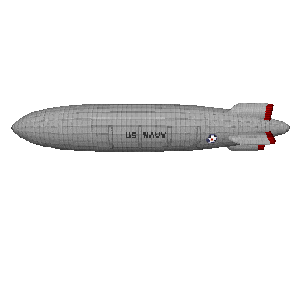
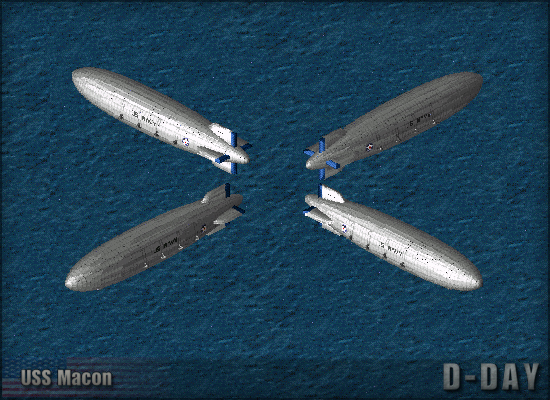
The USS Macon and it's sister ship the USS Akron are the second largest airships ever built, beaten by the German Hindenburg by only a few meters. They do however hold the distinction of being the only flying aircraft carriers ever built. Designed by the Goodyear Aircraft company in the early 1930's the Akron and Macon used an experimental trapeze system they could launch and recover up to five F9C Sparrowhawk planes from an internal hanger. Sadly the USS Akron was destroyed in April 1933 when it encountered a storm off the cost of New England and crashed into the sea, out of the 76 on board only 3 survived making it the greatest loss of life in an airship crash. During February 1935 the USS Macon also also found itself caught in a severe storm off the California cost, suffering structural failure it landed in the sea. Following the loss of the Akron life jackets and inflatable rafts where added to the Macon, which resulted in nearly the entire crew surviving. With the loss of both airships development of flying aircraft carriers was stopped.
Curtiss F9C Sparrowhawk
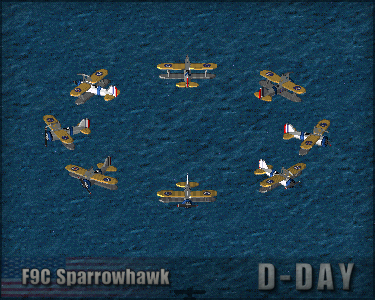
The Curtiss F9C Sparrowhawk was a fighter/scout plane made specificity for use on the USS Akron and USS Macon flying aircraft carriers. It was fitted with a hook on the top of the main wing which would be attached to a retractable trapeze underneath the carrier for launching an recovery. Even though the hook and trapeze system seemed complex most pilots noted that it was easier then landing on an pitching and rolling aircraft carrier at sea. After the loss of both the Akron and Macon only three Sparrowhawks remained, their hooks were removed and were relegated to utility duties. In 1939 one of them was given to the Smithsonian museum, several years later when it was restored the other two aircraft where cannibalised for parts, leaving just the single plane left which can still been seen today.
I haven't posted any new D-day news in three months, during that time I've been slowly working to finish all of the Japanese ground units. I'm nearing the end of this task and currently have over 30 new units to show, I hope to post them all in the coming weeks and to start things off here are some of Japan's first tanks.
To see more information and photos click on the images to go to their Wiki pages.
Ko-Gata Sensha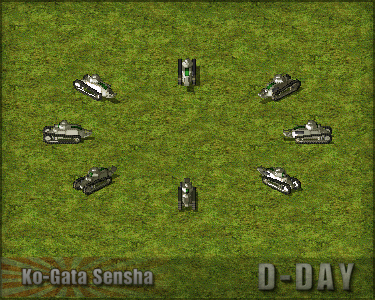
Like many countries Japan's first tank was the Renault FT which they bought 13 of from France in 1919 and named Ko-Gata Sensha, which means tank model A. They were initially given to the cavalry who were very impressed a requested more, however in 1922 the Imperial Japanese Army decided that only the infantry units will be allowed tanks so they were all transferred. In 1929 several of them were sent to Manchuria were they successfully participated in several clashes with Chinese forces. By 1932 they were becoming outdated and gradually replaced with new designs, so all of the remaining vehicles were given to the IJA tank school where they were used for driver training until they were worn out.
Otsu-Gata Sensha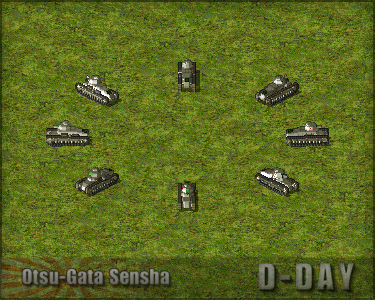
After the success of the Ko-Gata Sensha the Japanese sought to buy more modern designs from France, however the French were unwilling to sell there latest designs to another country, especially when they were all needed to equip their own army. Renault however was working on a new version of the FT17 called the NC1, which the French Army had rejected so they were eager to sell to Japan. After going through trials back in Japan the engine was found to be underpowered so it was replaced with a more powerful Mitsubishi diesel engine, the armour was also upgraded and the weapons changed to indigenous Japanese designs. They served in Manchuria and China along with the Ko-Gata during the 1930's, by 1940 they were still in active service but were soon replaced with new tanks.
Type 92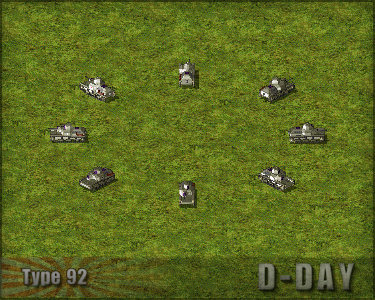
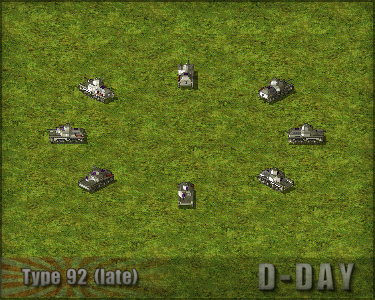
The Type 92 was Japan's first indigenous tankette, designed in 1931 for recon and infantry support with the cavalry. During that time though tanks were controlled by the infantry, to get round this restriction it was classified as an heavy armored car. exactly the same type of "reclassification" was also used in America with the M1 Combat Car. The Type 92 proved successful in China but tended to throw its tracks in high speed turns, to solve this problem the suspension and wheels were changed in later production models.
Type 97 Te-Ke
Following the development of the Type 94 TK Hino Motors started work on an improved diesel powered version with a larger weapon. Initial trials of the prototype did not go well so Hino Motors went back to the drawing board and designed a larger version of the Type 94 TK with the diesel engine moved from the front to the rear and the turret moved to the middle. Production of the Type 97 Te-Ke started in 1939 and soon replaced the Type 94 TK on the assembly line.
Type 98 So-Da
The Type 98 So-Da was an ammunition & personnel carrier based on the Type 97 Te-Ke, it could carry 10 infantry or 1 ton of cargo.
Type 100 Te-Re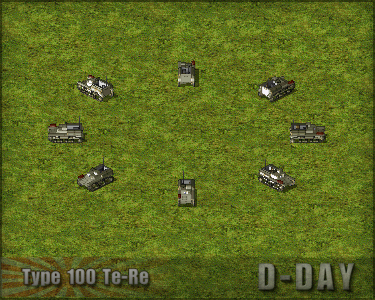
The Type 100 Te-Re was a artillery observation vehicle based on the Type 98 So-Da, the rear compartment that was usually used for storing cargo or troops was instead fitted with a large radio and observation equipment. Using these it would find and relay targets to artillery positions, then observe were the shells hit and give corrections.
Ingame the Te-Re works as a scout that can call in artillery strikes from off map.
Today's news post focuses on Japanese Anti-Tank defences, which range from the inadequate, the opportunistic and the mighty.
To see more information and photos of these guns click on the images to go to their Wiki pages.
Type 1 47mm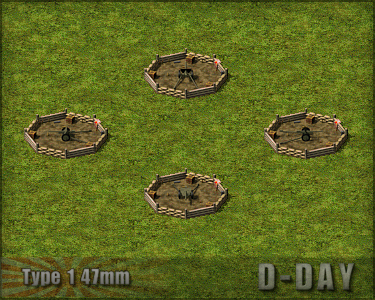
Work on Japan's first indigenous anti-tank gun design started in 1937 with several experimental prototypes built, none were put into production though because of inadequate performance. Following the defeat of Japanese forces to the Soviets During the Nomonhan Incident in 1939 interest in a new anti-tank gun resurfaced. Work on the design continued over the next few years and was finally completed in 1941 and standardised as the Type 1 47mm, production started in 1942 and it was deployed into service during 1943. By then the Allies had introduced newer tank designs witch the Type 1 was unable to effectively defeat, however with no other anti-tank guns available it continued to be used until the end of the war.
Available Pre & Early war.
Type 90 75mm
Designed in 1930 the Type 90 75mm was a field gun based on a French Schneider cannon, the design was an effective weapon but expensive and very complex to build and maintain. It was originally designed as a field gun/light artillery but during the later stages of the war the Type 90 was also successfully used as an anti-tank gun, being one of the few weapons that could effectively defeat the newer Allied tanks. In light of this the weapon was modified and used in the Ho-Ni and Chi-Nu tanks.
Available Mid & Late war.
Type 5 105mm
The Type 5 was an experimental anti-tank gun developed in 1945 during the closing stages of WW2, the Japanese had planned to use this weapon in the Type 5 Ho-Ri tank destroyer but the war ended before a prototype of the Ho-Ri was built.
Available Post war.
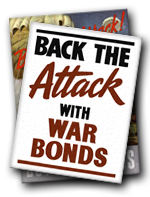 If you have enjoyed playing D-day consider giving a donation to help further development.
If you have enjoyed playing D-day consider giving a donation to help further development.

This site is best viewed at a resolution above 1152x864 with Firefox.
Should there be any problems with the site, please contact the webmaster.

